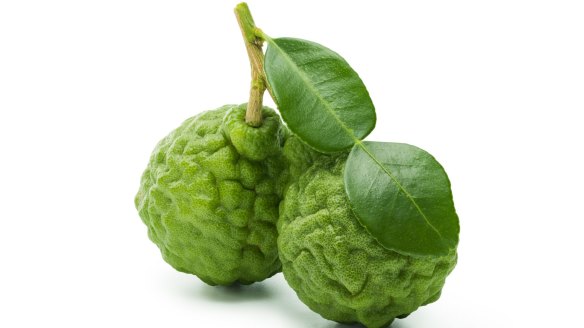Why many consider kaffir lime a racist name

Are kaffir limes racist? K. Le
The word used to describe this deep-green citrus fruit with skin folded like a Klingon's brow has a fascinating past. Let's begin in Sri Lanka about 350 years ago when Portuguese and Arab traders brought with them people from the east of Africa to work as staff and soldiers. Many stayed and intermarried. For generations, their descendants have had their own language and customs. They proudly call themselves Sri Lankan Kapiri. In English, Kapiri is "kaffir". The word comes to us from Arabic, where kafir means infidel or unbeliever. It is used as a racist term of abuse in South Africa, where it is considered as vile as the N-word. These little limes are known botanically as Citrus hystrix. They are native to Sri Lanka and also found in Mauritius, where they are called papeda, and vast swathes of south-east Asia, including Thailand, where they are known as makrut. In the late 1800s, Scottish botanist H. F. MacMillan introduced the fruit growing in Sri Lanka to the English-speaking world, using the name kaffir lime. The name has stuck. In South Africa, it would seem that this etymology is accepted, and they describe the fruit as kaffir lime, where other uses of the K-word are considered so offensive a woman was jailed in 2018 for abusing a black policeman with the word. But like many chefs and food writers in Australia, Britain and the US, Good Food has chosen to adopt the Thai name, makrut, instead.
My German grandmother (Oma) told me she was still happy and active at 85 because she ate cabbage every day. L. Ryan
When I was growing up on the farm, we had an old German couple stay with us. They lived in a caravan under the pine trees, and every winter, they would annex the outside laundry to make sauerkraut. They would inhale plates of it with bratwurst and Thomy mustard. They attributed their longevity to the cabbage, and their daily naked sea swims. Eating cabbage, broccoli, and any other cruciferous vegetable will lower your risk of vascular disease. Researchers from the University of Western Australia recently reported a study that found that women who eat more than 45g of vegetables from the cabbage family a day have 46 per cent less dangerous build-up of calcium in their arteries. So, listen to Oma and happily hoe into the coleslaw, sauerkraut and cauliflower salad.
Letters
Recently, a reader suggested covering a box grater with plastic wrap when zesting a lemon to stop the zest sticking between the grater's teeth. The anti-plastic lobby was rightly appalled and responded with a torrent of mail. Several less irate readers, such as B. Haywood, suggested using a pastry brush to whisk away those little pieces of zest stuck to the grater without the risk of ingesting fine pieces of polyethylene.
Send your vexing culinary conundrums to brainfood@richardcornish.com.au or tweet to @foodcornish
Appears in these collections
- More:
- Food
- Brain food
